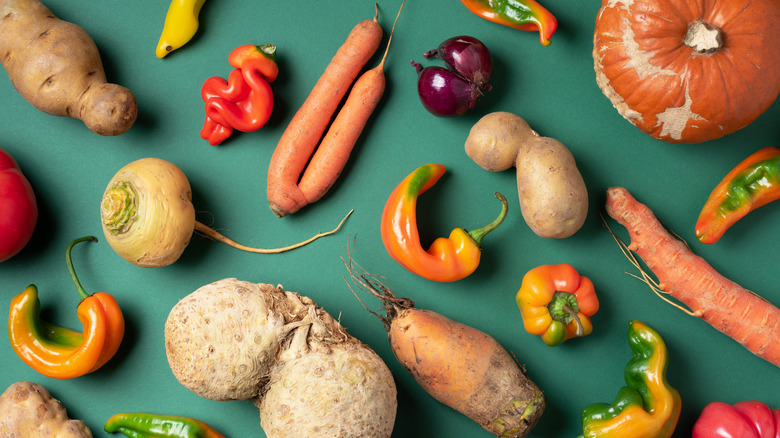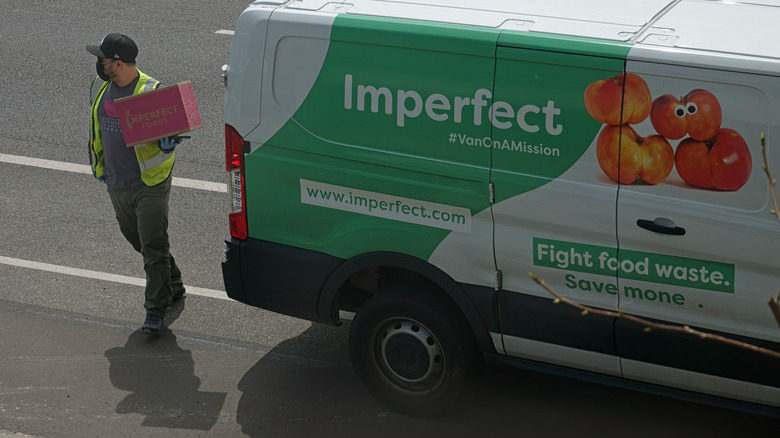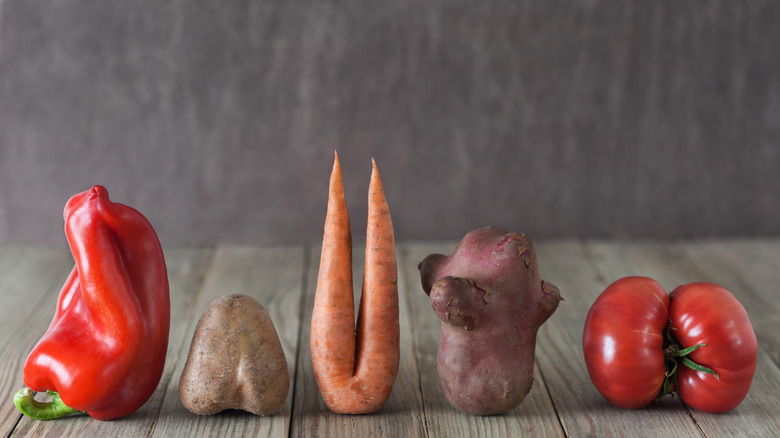What Is Ugly Produce? (And Why It Can Save You Money)
One of the biggest issues facing our economy, environment, and public health is food waste. The World Economic Forum estimates that roughly one-third of the world's available food supply, around 2.9 trillion pounds per year, never actually makes it to our plates. Produce – fruits, vegetables, roots, and tubers – is wasted more than any other type of food, with the WEF estimating that nearly 50% goes to waste each year. The obvious consequence of this is that far too many people go without food, but that's only the tip of the iceberg. The United Nations explains that food waste has catastrophic consequences for the environment. Food production consumes vital resources and is a major contributor to greenhouse gas emissions. The UN reports that uneaten food consumes a volume of water equivalent to the yearly flow of the Volga River and adds roughly 3.3 billion tonnes of greenhouse gasses to the atmosphere.
The problem can be broken into two parts: food loss and food waste. As the Harvard School of Public Health explains, "loss" occurs when food is discarded during the production, processing, storage, and distribution stages. In other words, everything prior to retail. Food "waste" occurs at the retail or consumer stages. Frustratingly, both loss and waste are often grouped together and collectively referred to as "food waste," which obscures the important difference between the two. However, there is one subject that lives right at the intersection of loss and waste: ugly produce.
Numerous startups are selling ugly produce at low prices
'Ugly' produce refers to fruits and vegetables that farmers can't sell to retailers because they are misshapen or off-color (via Berkeley Economic Review). There are multiple reasons that a potential buyer might reject so-called ugly produce. One is the fact that scratches and punctures can reduce the shelf life of some produce, but the New Yorker explains that misshapen produce can also be seen as a nuisance. They give the example of twisted or "two-legged" carrots, which are more challenging to peel than others. Is that a mild inconvenience? Yes, but it's enough to dissuade many wholesalers from paying up. Farmers lament the time, money, and labor lost to unwanted produce, and we've already discussed the other consequences.
Enter into the picture a growing number of ugly produce purveyors. The Atlantic rattles off some examples with charming names like "Misfits Market" and "Imperfect Produce." They step in where other retailers won't, buying up unwanted produce from farmers and selling it to customers at a lower price than grocery stores usually charge. These businesses ship directly to the customer's doorstep, typically on a subscription basis. However, some grocery stores are joining the trend as well. Supermarket News reported in January 2023 that Sprouts Farmers Market would launch an ugly produce initiative called Rescued Organic at its California locations. It could potentially save food and consumer dollars, but some people take issue with the growing ugly food industry.
Ugly produce companies have vocal critics
Truthfully, the ugly produce issue isn't as cut-and-dry as it may sound. Crop scientist Sarah Taber tells Vox that brands such as Misfits Market make it sound like farmers are just throwing food away, but in actuality, much of it is used as animal feed or compost for planting the next round of crops. The Atlantic adds that some 'ugly' fruits and vegetables even make it to our mouths in other forms, such as baby carrots, which are cut from larger, cosmetically 'unattractive' carrots. Taber argues that the bigger problem regarding food waste is inefficient farming practices, such as using vast amounts of land to grow crops that are vulnerable to weather when greenhouses would be far more efficient.
Other people claim that ugly produce companies take food away from the people who need it most. Non-profit food banks often rely on donations of unsellable food from farmers, and they argue that ugly produce companies motivate farmers to withhold such donations. The Berkeley Economic Review notes that most subscribers to ugly produce services are affluent consumers, but some efforts are being made to change that fact. Imperfect Produce now offers discounts to those who qualify for SNAP benefits. Still, many non-profits argue that ugly produce companies are grandstanding – marketing themselves as environmental heroes when they are really motivated by profits. Perhaps both facts are true. Ugly produce vendors can profit from structural problems in the food system while still doing a service.


